A Novel Blueprint for Building Your Book
One author finds that using digital tools to create a visual story grid is the trick he needs to crystallize his ideas and never miss a beat.
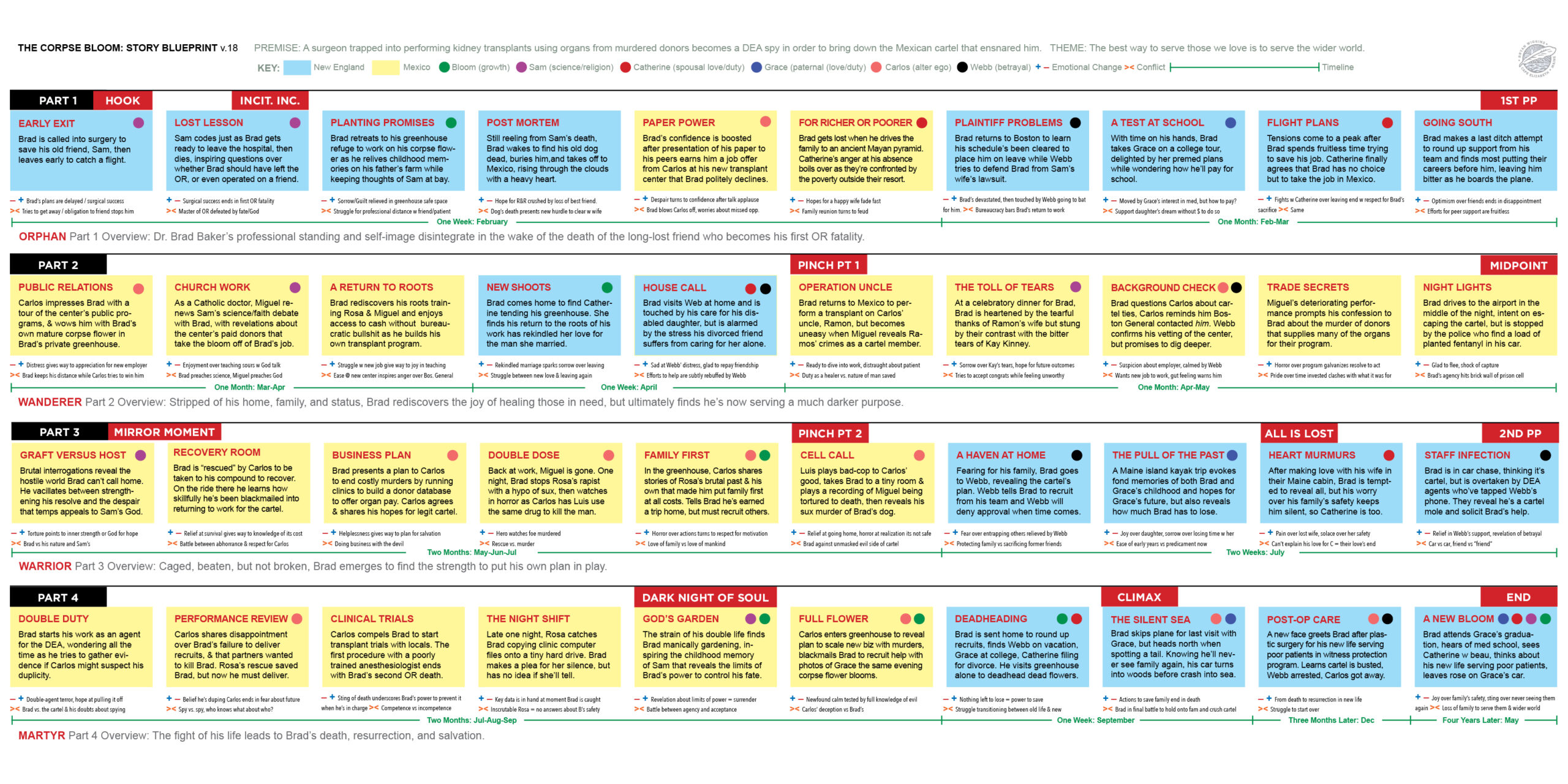

Today’s post is by author Bryan Wiggins.
“Learn the rules like a pro, so you can break them like an artist.”
That quote, attributed to Picasso, reflected his commitment to mastering classical techniques before venturing into the abstract work that made him an icon of human creativity.
Learning the “rules” for writing fiction before I could distinguish myself as a literary artist was certainly my goal when I first committed to an early-morning practice of working on my stories. That was the only way I could make daily progress on my long-form work before starting my day job cranking out ad copy. I read more books than I can remember, applying what I learned to the six novels I wrote.
The one that laid out the most accessible plan for me was Larry Brooks’ Story Engineering. It was the first guide that revealed how to coordinate the inner and external journeys that pack the double-punch in a knockout narrative. A complementary change in both protagonist and plot is the key to keeping the reader engaged, page after page. That four-part evolution—in which a character’s identity shifts from orphan to wanderer, warrior, and finally martyr, and the plot moves through setup, response, attack, and resolution—remains the primary focus of my daily dives into the fictive realm.
A design for concept distillation
Even with Brooks’ sharp analysis, however, the depth of the “six core competencies of storytelling” that he detailed in his book were still too overwhelming for me to synthesize as a guide for writing my tales. So I turned to my training as a graphic artist to create a template that could crystallize the key points of Brooks’ plan. Here’s a thumbnail peek at the novel blueprint I made to guide the development of my tales:
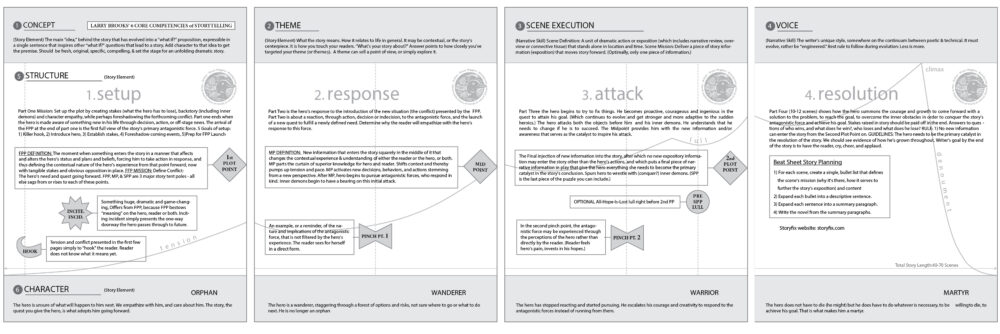
Brooks seemed to bless the way I’d visually distilled the concepts he verbally defined from the storytelling traditions that have evolved since our ancestors first traded tales around the fire. When he asked to put my blueprint in his follow-up book, Story Physics, I was delighted to complement his narrative approach with my visual cheat-sheet. Its power was further proved in the help it gave me in writing Autumn Imago, a novel that earned traditional publication with HarperCollins.
Customizing content to turn principles into plot
When I later tried my hand at self-publishing, however, I wanted to make a custom map based on my theoretical model, so I delved into creating one in Adobe InDesign. I also started folding in reference points from other writing teachers. I adopted ideas on my story’s premise, theme, and designing principle that I developed from John Truby’s The Anatomy of Story. James Scott Bell’s “mirror moment” detailed in Write Your Novel from the Middle became another tool for navigating around the “muddle in the middle” that so many novelists struggle with. As you can see from the thumbnail below, my new template got quite complex. But when the medical thriller I created from it (The Corpse Bloom) started snagging some attention and awards, I gave credit to my latest visual outline for its success.
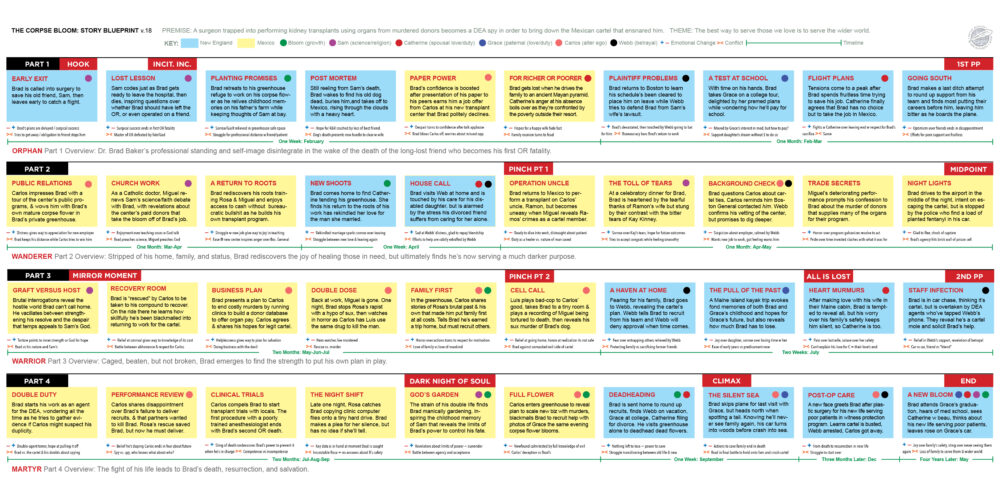
Time made it time to try something else
The temporal frame I’m just starting to explore for my latest novel-in-progress (Last Catch) now has me tinkering in Adobe Illustrator to build the new kind of blueprint I need. The story’s twin timelines of two single days in the life of its lobsterman-protagonist mandate that I not only account for each hour in these twin tales but also environmental notes on the sunrise, sunset, and tidal flows that frame my hero’s final day at sea. In the screenshot below, you can see that there are still holes to fill in for the “child’s” narrative. But the more details I add about the “man’s” story and its climatic context, the stronger the links become that join the tale’s two storylines to support the novel’s theme on the value our mortality grants to the meaning of our lives. Complementing the two plot timelines against another one for the lobsterman’s fishing trip (shown at right, below) grants me triple power in promoting my message that our short lifespans make each moment most precious when we live it both consciously and conscientiously.

Scrivener as a key for blueprint flexibility
For a structure-freak like me, the process of creating these kinds of detailed models comes with a caution; it can lead to an obsession with byzantine blueprints that threatens to miss the magic the subconscious serves up when writing in a more organic mode. So, for the novel I just completed (Tremolo Pond), I challenged myself to give the Adobe Suite a rest in order to develop a quicker way to map my stories in the same program I write them in. The final three annotated screenshots below show how I used Scrivener’s corkboard view to create a dynamic chapter grid I can keep noodling with as I work back and forth between my novel’s master plan and the intuitive insights the muse dishes up when I’m zoomed into the scene-writing zone. My novel blueprint still forms the foundation of this process, but I’ve used it long enough to develop an intuitive feel for its principles. Therefore, my Scrivener template doesn’t require many of the labels and definitions that appear in my original “master” blueprint.
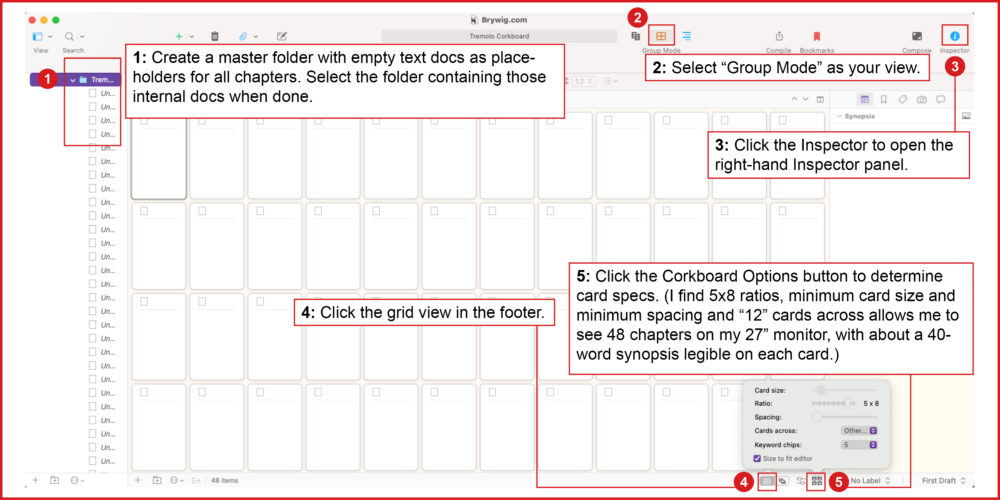

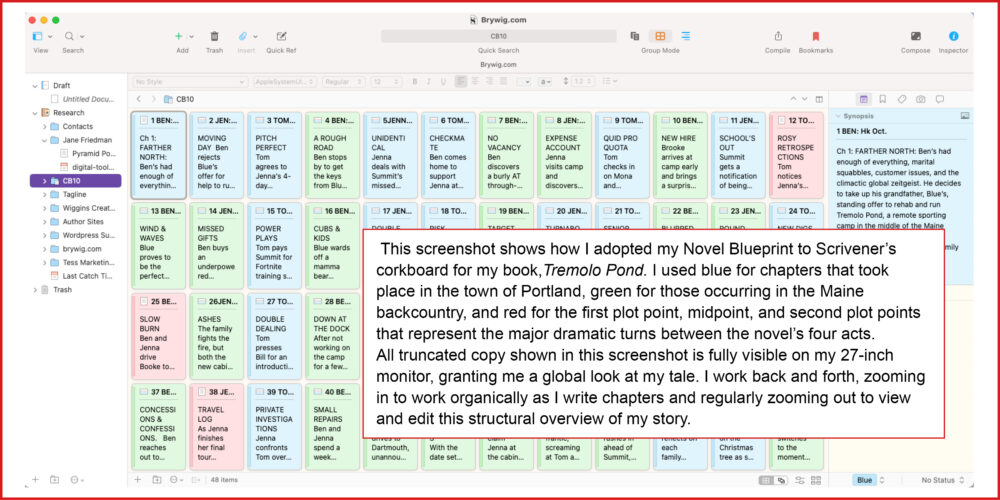
Want to play with your own story plan?
If you’d like to adapt this system to your own work—or simply explore how visual planning might energize your process—visit this page on my website. There you’ll find a printable version of my novel blueprint and larger views of the screenshots shown above. My hope is that they’ll provide the same value to you that they have for me. None is a “recipe” for creating a successful novel, but I believe they can be important ingredients for one. The real magic comes, of course, from your own insights and experiences. Those echoes of your spirit breathe life into narratives that—when structured soundly—have the power to entertain, educate, and enlighten all.




















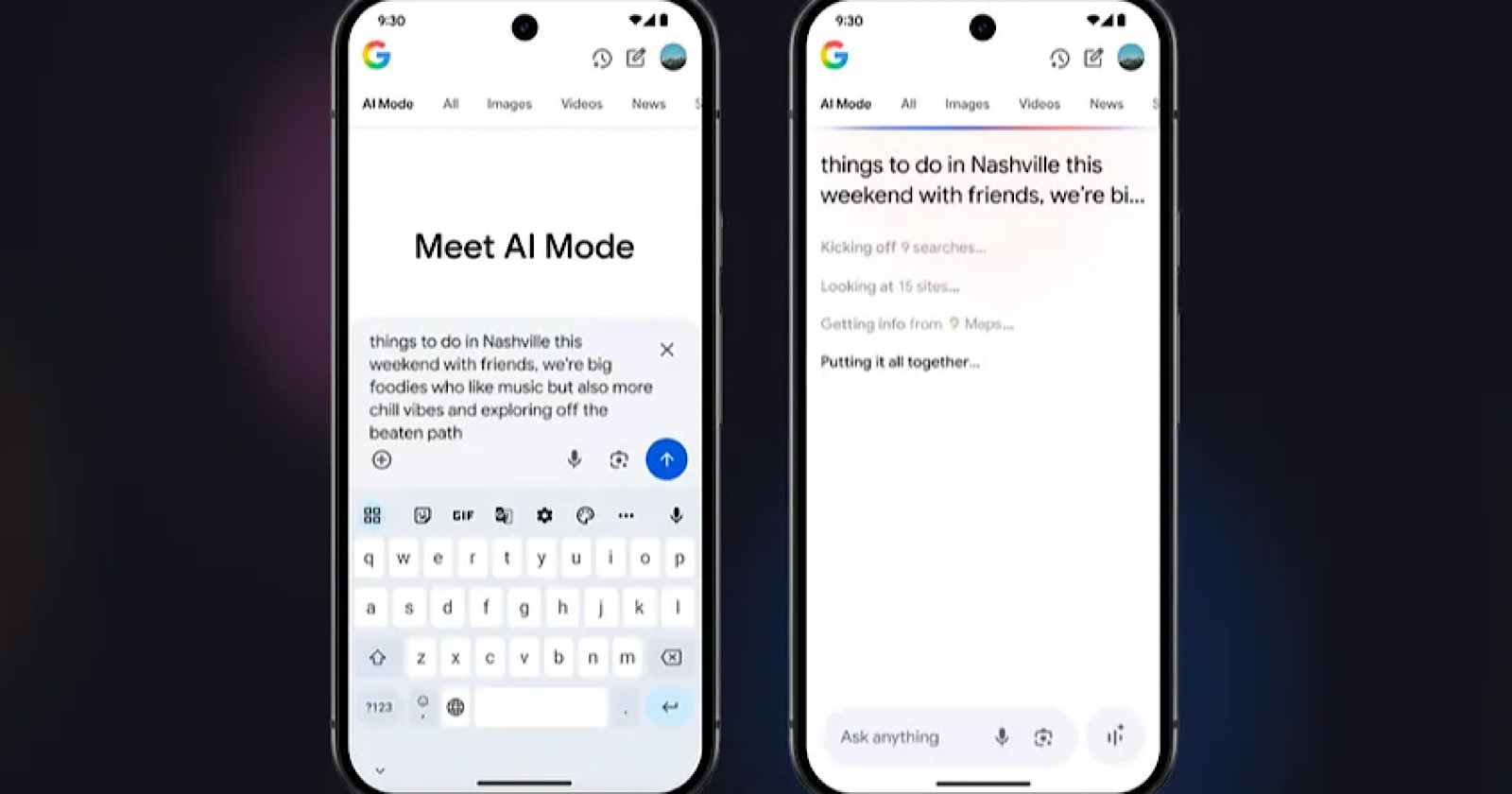





![How To Launch, Grow, and Scale a Community That Supports Your Brand [MozCon 2025 Speaker Series]](https://moz.com/images/blog/banners/Mozcon2025_SpeakerBlogHeader_1180x400_Areej-abuali_London.png?auto=compress,format&fit=crop&dm=1747732165&s=beb7825c980a8c74f9a756ec91c8d68b#)
![Clicks Don’t Pay the Bills: Use This Audit Framework To Prove Content Revenue [Mozcon 2025 Speaker Series]](https://moz.com/images/blog/banners/Mozcon2025_SpeakerBlogHeader_1180x400_Hellen_London.png?auto=compress,format&fit=crop&dm=1747758249&s=9f3c5b1b7421f862beace1cb513053bb#)
![How To Create an Integrated Strategy That Increases Brand Mentions and Visibility [Mozcon 2025 Speaker Series]](https://moz.com/images/blog/banners/Mozcon2025_SpeakerBlogHeader_1180x400_JamesH_London.png?auto=compress,format&fit=crop&dm=1747780409&s=9bf9f0a2623b4a8be6eaf8f235115505#)





















![The 11 Best Landing Page Builder Software Tools [2025]](https://www.growthmarketingpro.com/wp-content/uploads/2024/04/best-landing-page-software-hero-image-1024x618.png?#)





























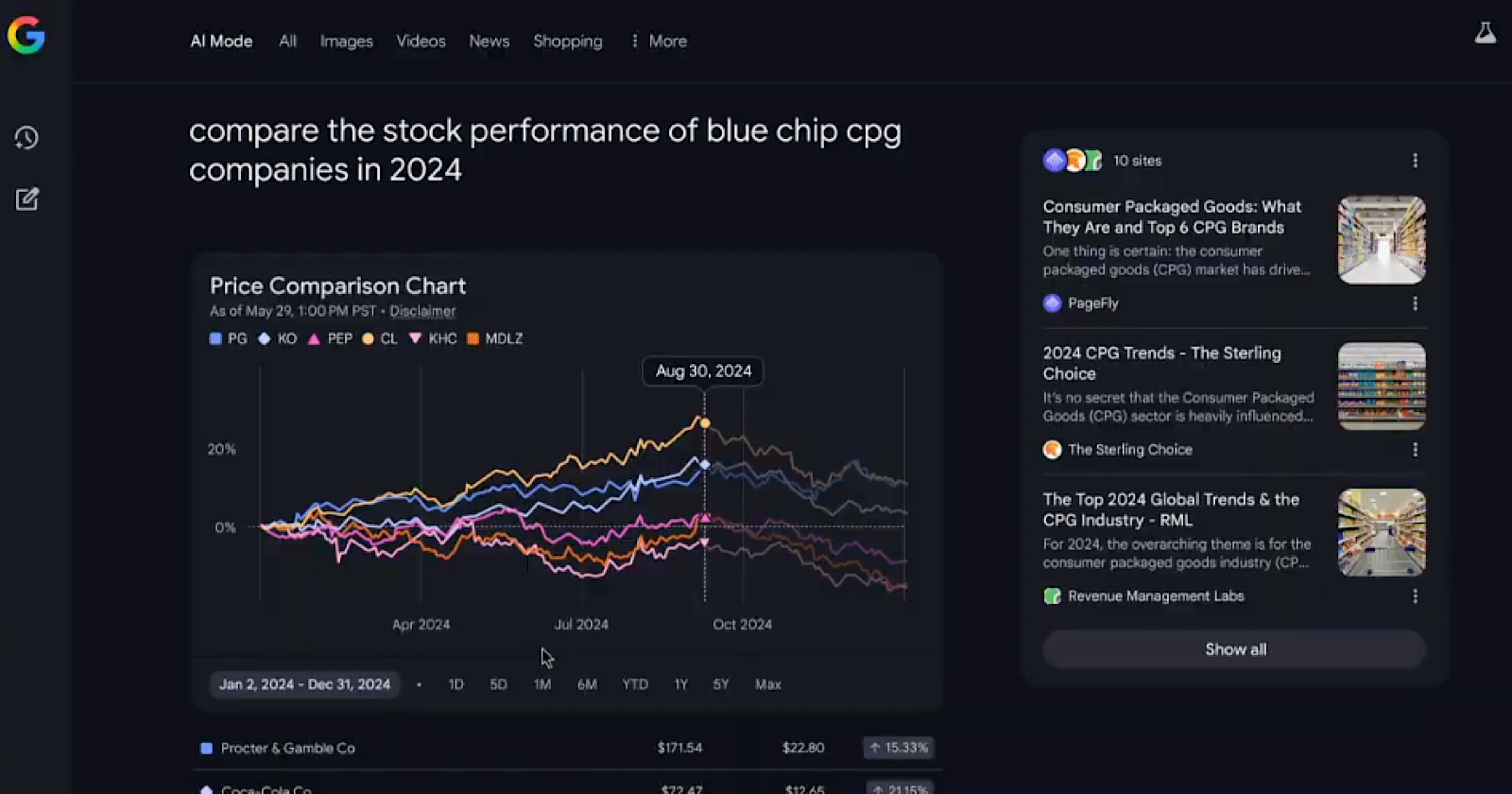































![Social media image sizes for all networks [June 2025]](https://blog.hootsuite.com/wp-content/uploads/2023/01/Social-Media-Image-Sizes-2023.png)



![Discrepancies experienced by Black content creators [new data + expert insights]](https://www.hubspot.com/hubfs/discrepancies%20experience%20by%20black%20content%20creators%20%20598x398.jpg)

![What you're doing wrong in your marketing emails [according to an email expert]](https://53.fs1.hubspotusercontent-na1.net/hubfs/53/jay-schwedelson-mim-blog.webp)

















